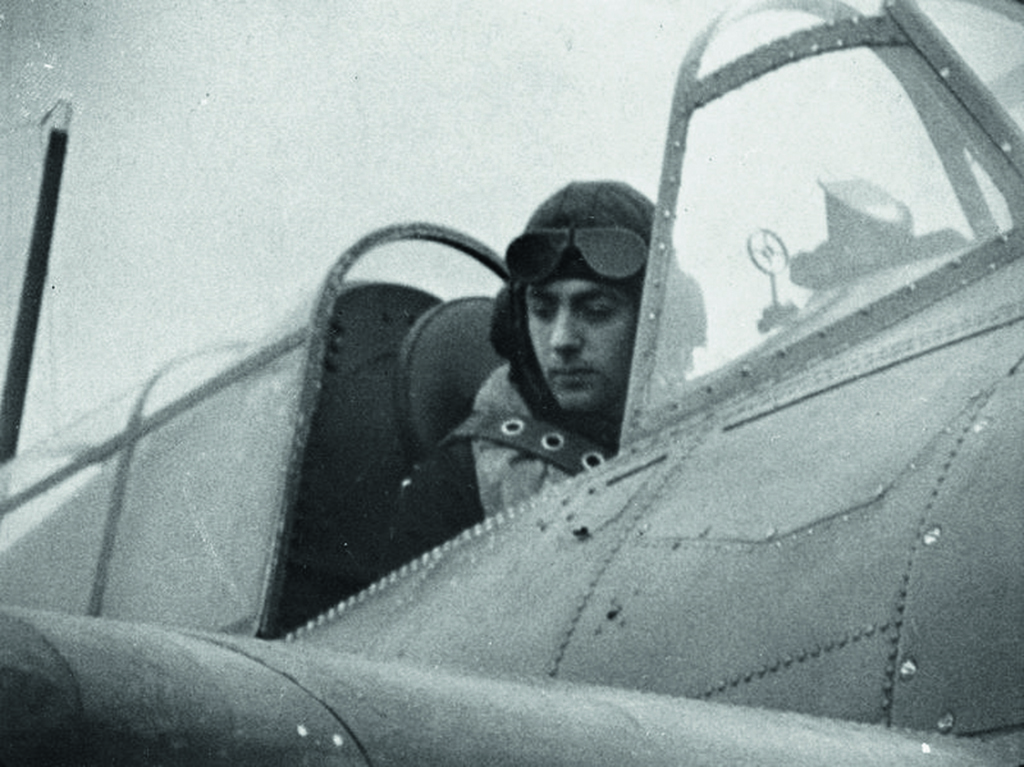
The flying Scotsman who kept our skies safe
A glorious life above the clouds was always written in the stars for the natural born pilot and wee winged wonder that was Captain Eric Brown.
Captain Eric Melrose ‘Winkle’ Brown, CBE, DSC, AFC, Hon FRAeS, RN was the most-decorated pilot in the history of the Royal Navy. A British Royal Navy officer and test pilot, he flew more aircraft than anyone else in history.
In 2015, the war hero – who passed away on 21 February 2016 – told Scottish Field: ‘Two things have contributed to my survival. Firstly, I’m absolutely vitally involved in preparation for anything I do; I think lack of preparation is what causes a lot of fatalities in aviation. Secondly, I’m not very tall. I’m only 5ft 7in. There have been crashes – three that I know of – where I should have lost my legs, but being small I tucked them under my seat.’
A cool-headed pragmatism typical of the man who survived 11 crashes, persuaded an airfi eld of 3,000 Germans to surrender to him at the end of the Second World War, and survived the bombing of HMS Audacity, must also have played a part.
Aged 96 when he spoke to Scottish Field, Captain Brown, nicknamed Winkle due to his small stature, was one of the greatest test pilots the world has ever seen.
He flew more aircraft types – 487 – than anyone else in history, and holds the world record for aircraft carrier landings: 2,407.

A young Eric Brown in the cockpit
Gloriously understated, Brown was everything that is great about Britain. Charming, courageous, and with a stiff upper lip softened by a twinkle in the eye, his personal account of historic events was spellbinding.
Born in Leith in 1919, Eric Melrose-Brown was perhaps destined for the skies. His father had served with the Royal Flying Corps (RFC) during the Great War and went on to be an RAF pilot. In 1929 Brown senior drew the wrath of his wife when he took their 10-year-old son for his first flight in a Gloster Gauntlet, the younger Brown sitting on his father’s knee. Seven years later he was airborne for a second time when his father took him to see the 1936 Olympic Games in Berlin.
Among those hosting the RFC delegation was First World War fighter pilot and famous stunt flyer Ernst Udet, who took the young Brown up for a spin.
‘He really put that machine through the hoop,’ Brown said. ‘I wasn’t scared until the last minute of the flight when we came into land and he turned it upside down. I thought “the silly old fool’s had a heart attack!” But he was such a brilliant pilot, that was his idea of signing off at the end of the flight. He was testing me and he roared with laughter afterwards.’
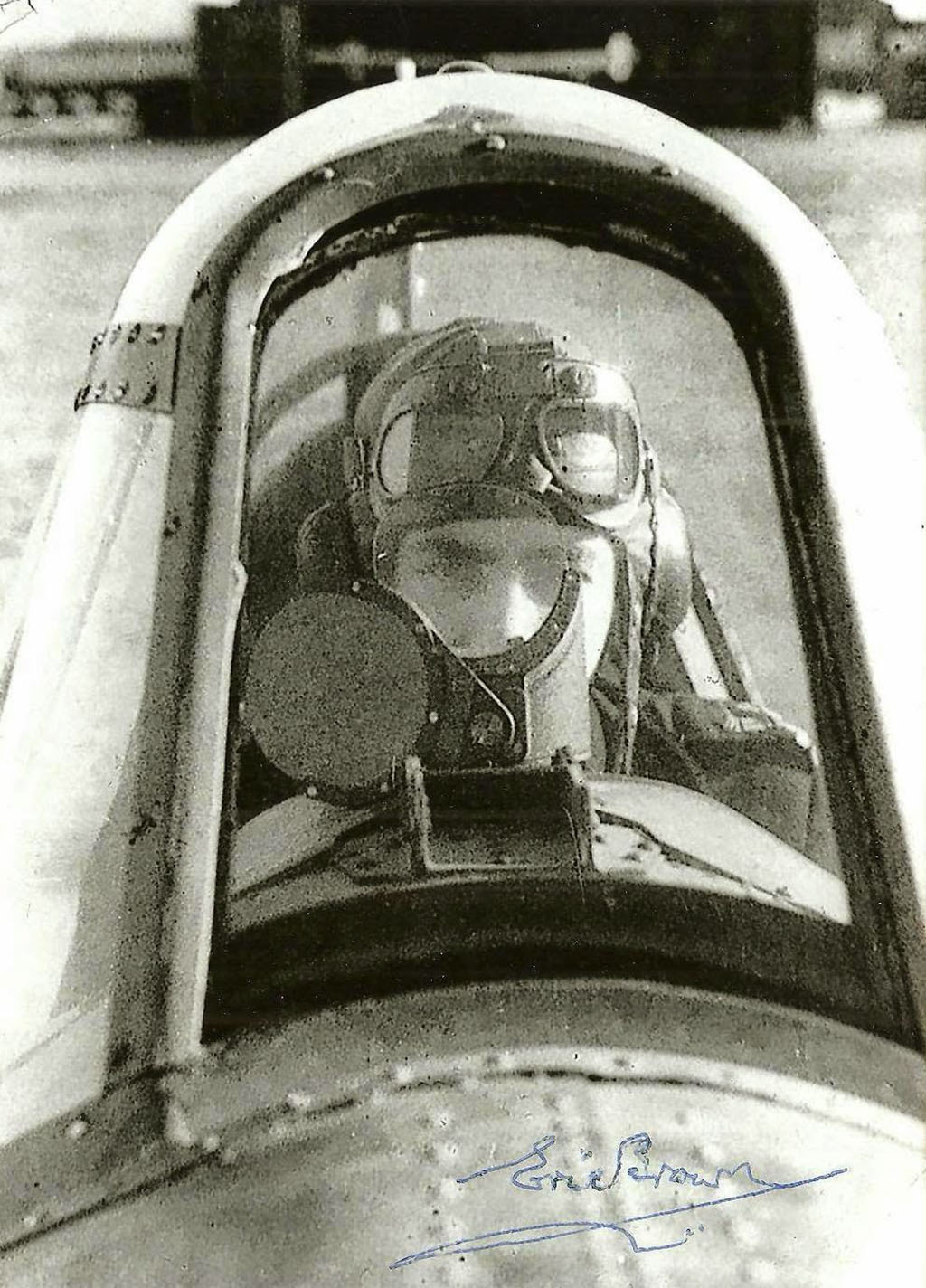
Eric Brown has his target in his sights
Far from being put off for life, the 17-year-old was hooked. He went on to study modern languages at the University of Edinburgh, where he joined the air squadron. Not surprisingly he got the hang of flying very quickly.
‘It seemed to come fairly naturally,’ he said. Already an aviation enthusiast, Brown took a key interest in German technology. In 1938 he went to study at the Salem International College as part of a student exchange, and was still there when war broke out.
Arrested by the SS – who took his possessions, escorted him to the Swiss border and sent him on his way – Brown admits the whole thing caught him by surprise. ‘I was very taken aback by it all,’ he said. ‘I think I was politically naïve at that stage, I hadn’t seen it coming.’
Peeved at his treatment, Brown hotfooted it home and immediately signed up with the RAF. Itching to get airborne, and frustrated by the lack of RAF planes and postings, he switched to the Fleet Air Arm, retraining as a naval pilot. He was serving on HMS Audacity escorting vital convoys between Britain and Gibraltar when it was torpedoed in December 1941.
Left in the water and roped together with 23 survivors, Brown was one of just two men to make it through the night. Did he give up hope of rescue?
‘Oh no,’ he recalled, ‘I’ve always been a bit of an optimist.’
Back on British soil the young pilot was transferred to special duties, embracing his dream role as a test pilot at Farnborough. Selected to specialise in enemy aircraft, his detailed analysis enabled him to advise the front line squadrons on how the opposition flew.
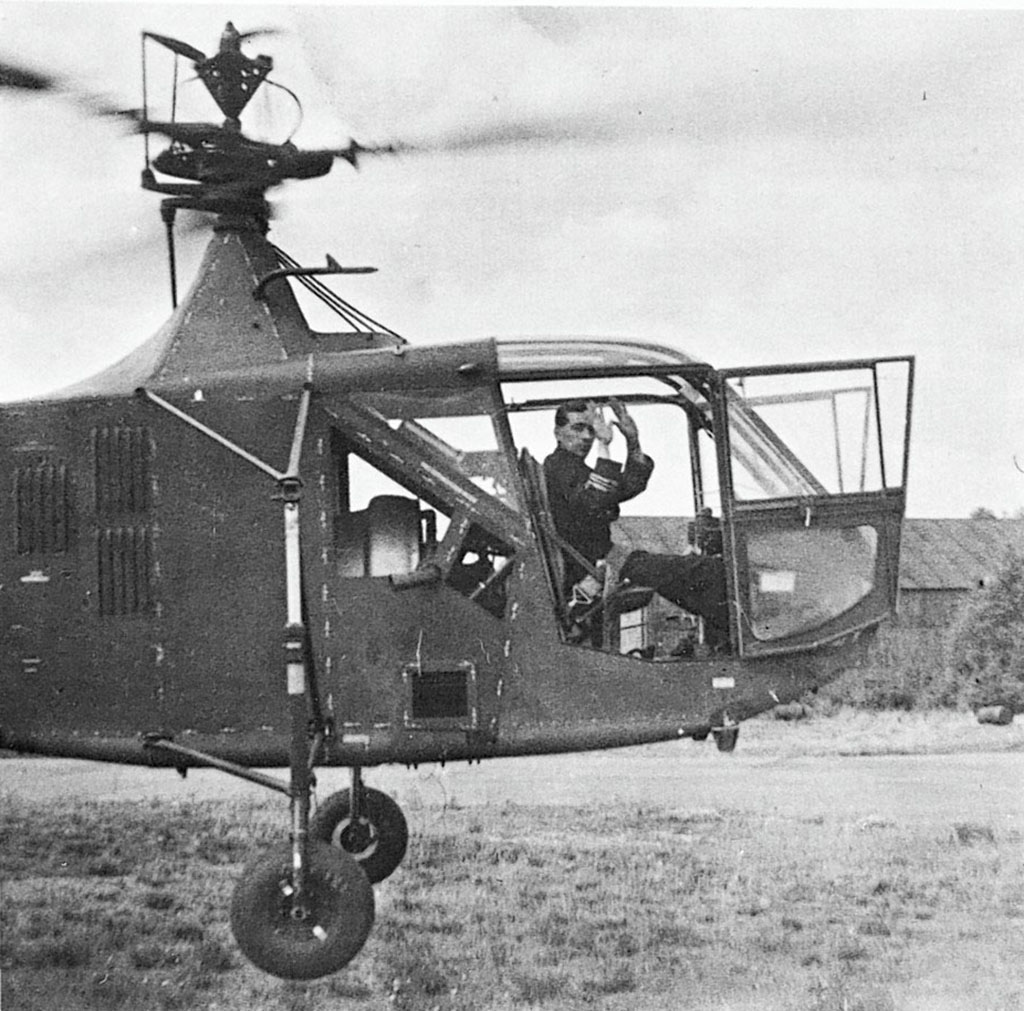
Eric Brown in one of the many aircraft he flew
‘I was very interested to see how their technology compared with ours,’ he explained. ‘It was vital that we kept ahead, or at least up with, the best of the enemy.’
He tested all captured aircraft, including a number of potential death traps. Perhaps the most dangerous was the Messerschmitt Me 163 Komet – a rocket plane that ran on liquid explosive. ‘The volatility of the fuels used meant you were sitting on an explosive machine that could go off at almost any minute,’ Brown said matter-of-factly.
On 25 March 1944 the young Scot made history when he became the first pilot to land a twin-engined aircraft on a carrier, expertly bringing a Sea Mosquito to land on HMS Indefatigable. ‘That was probably the proudest moment of my career,’ he said. ‘We were in very friendly competition with the Americans, you see. We beat them to it by nine months, so that was a feather in the British cap!’
From great highs there were terrible lows. Landing at a captured airstrip in Germany the following April, Brown met Allied troops investigating rumours of a concentration camp at Belsen. Realising the young pilot had better German than his interpreter, the brigadier in charge asked him along to assist with translation.
‘Belsen was a horror that can never leave you,’ related Brown. ‘There were so many dead bodies and a dreadful stench to the place which lingers in my nostrils to this day. To think that these people who I had quite admired had resorted to this sort of thing, I was absolutely appalled.’
He was asked to interrogate a number of notable Germans, including leading Nazi and First World War fighter ace Hermann Goering, Belsen commander Josef Kramer and his female colleague Irma Grese – the ‘worst human’ Brown said he ever met – and Wernher von Braun, an aerospace engineer who Brown had admired prior to the war.
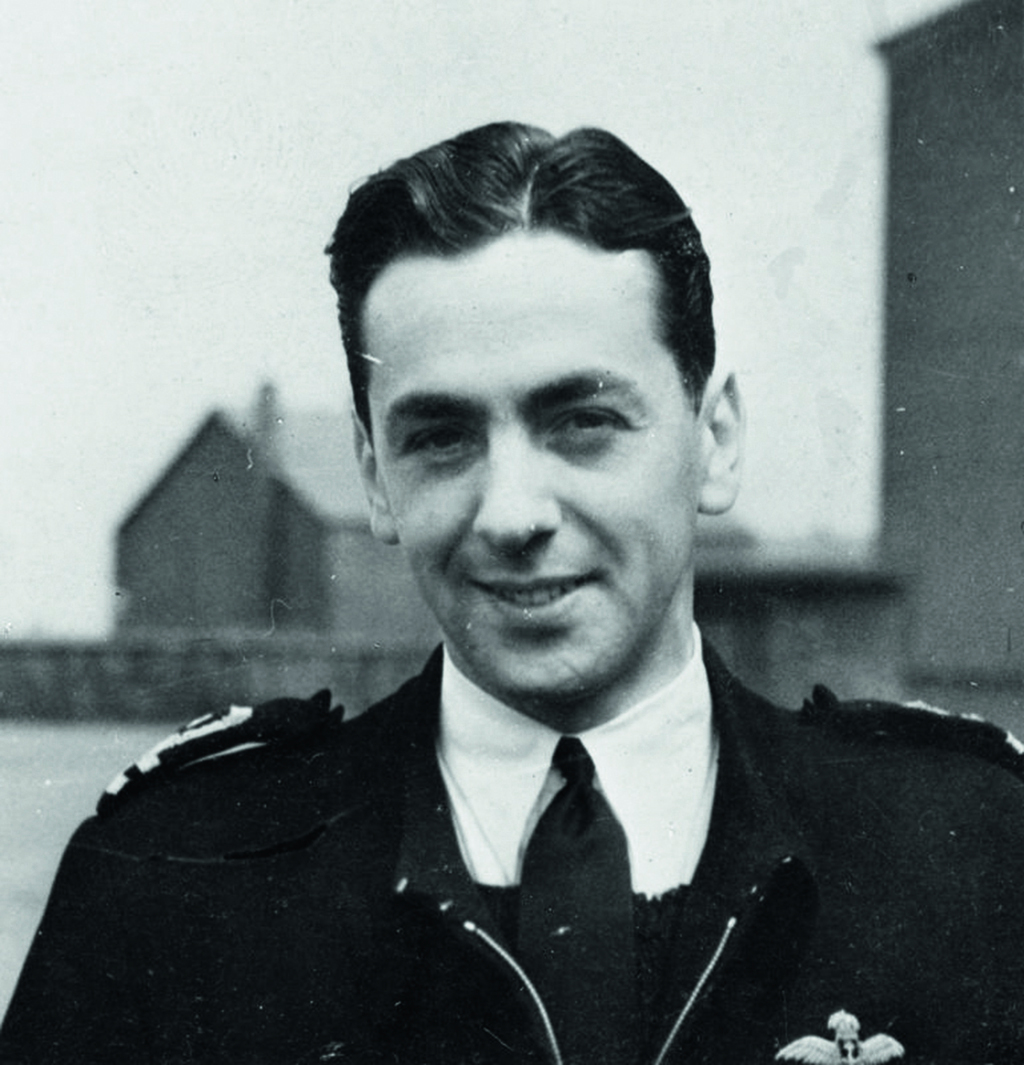
Eric Brown in RAF uniform
‘I had always followed what the scientist Wernher von Braun was doing very closely,’ Brown said. ‘I had the good luck to interrogate him after the war and he was one of the most extraordinary people I’ve ever met. He had given himself up to a young American officer, and told him, “aren’t you the lucky one to get me because I’m going to take your country to the moon”. What confidence! And of course he did it.’
With the war coming to a close, Brown was made commanding officer of Enemy Flight and tasked with securing German aircraft so that they would not fall into Soviet hands. Seeking out airfields where advanced jets were likely to be found, he was advised to visit Grove in Denmark.
‘The 2nd Army was moving through Schleswig-Holstein. We kept in contact with them and I said, “look, we’ve got word that there are some German jets, new ones, in this airfield called Grove in Denmark. Will you capture the airfi eld before us?” And they said “oh yes, we’ll be there”. So we took them on their word and off we went.’ But the Brits’ progress was slowed when they ran into the SS guarding Hitler’s successor Admiral Dönitz near Flensburg.
‘I arrived fat, dumb and happy at Grove thinking the army would be there and there was nobody there but the Germans!’ Brown said. ‘Fortunately it was a couple of days or so before the capitulation, most of their senior officers had fled. But therewere still 3,000 Germans on the airfield and just six of us, so we were outnumbered considerably.’
Rarely fazed, the unflappable Brown ‘bluffed his way through’ with the senior Luftwaffe officer accepting the inevitable and surrendering to him.
The sword of surrender hung on the wall of Brown’s home. ‘My wife Jean doesn’t exactly love it because she has to dust it every day,’ he laughed.
After the war Brown worked extensively on the Miles M5.52 research project to fly the world’s first supersonic jet capable of 1,000mph. In February 1946 it was confirmed that he would be the test pilot, but six months before he was destined to break the sound barrier, the project was inexplicably cancelled.
‘That was the biggest disappointment of my career,’ he admitted. ‘It still niggles me today because now I know more of what went on in the background. There was a lot of skulduggery. You’ve got to realise that this country was financially broke at the end of the war, and here we were trying an experiment well ahead of anybody else. The Americans wanted to be the first to go supersonic and I think it was as simple as this; they were prepared to pay for the knowledge that we had – and when I say pay, I mean huge sums of money.’
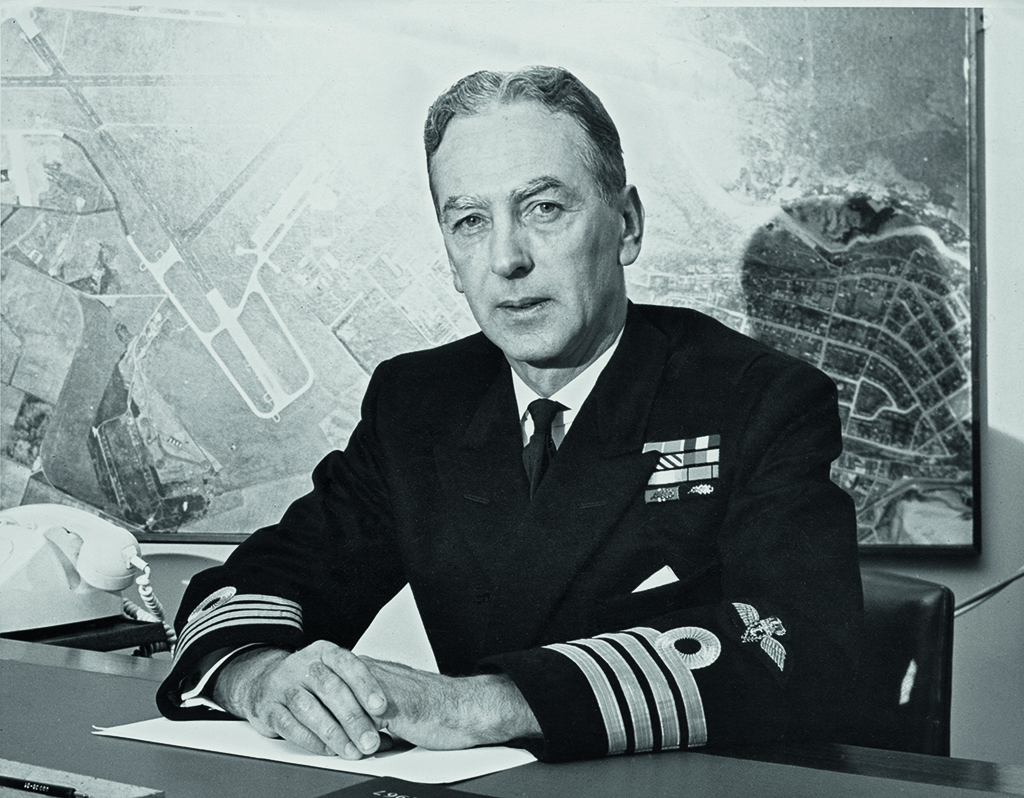
Eric Brown at Lossiemouth in 1967
Brown’s distinguished Royal Navy career continued with stints in America and Germany as well as the UK. In 1967 he returned to Scotland to command the naval air station at Lossiemouth, retiring from the Navy three years later.
‘That was a fantastic time,’ he said fondly. ‘Morayshire is such a beautiful county and my heart lifts anyway every time I cross the border. I’m a proud Scot and there’s nowhere like bonnie Scotland, not really.’
Unable to keep his feet on the ground, Brown went into flying helicopters, before finally stopping flying at the age of 70.
A war hero in the truest sense of the word, Brown helped shape history. Despire retiring, he still contributed to the world of aviation, as he wrote numerous books and lectured extensively.
In his latter years, there was, however, time for catching up on everything he was too busy to do during his flying days.
‘I’m an avid reader and lap up anything to do with flying,’ he said. ‘I have been trying to catch up with some of the First World War stuff to see how my father’s life was in those days.’
There was also time to indulge his love of cars. ‘I’ve never been in the Bentley category, although I would have loved to have been,’ Brown said wistfully.
Captain Eric Melrose ‘Winkle’ Brown – 1919-2016.
TAGS

